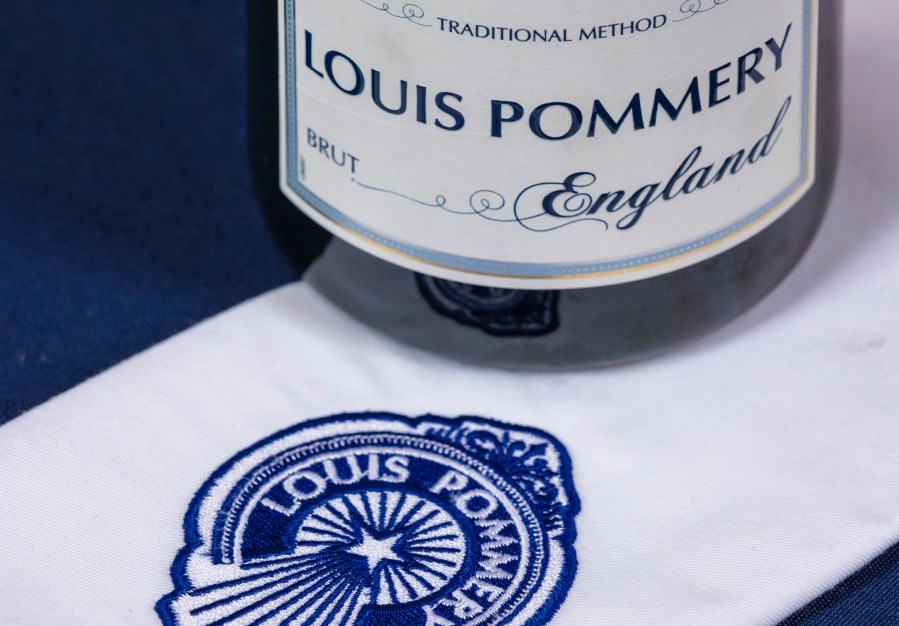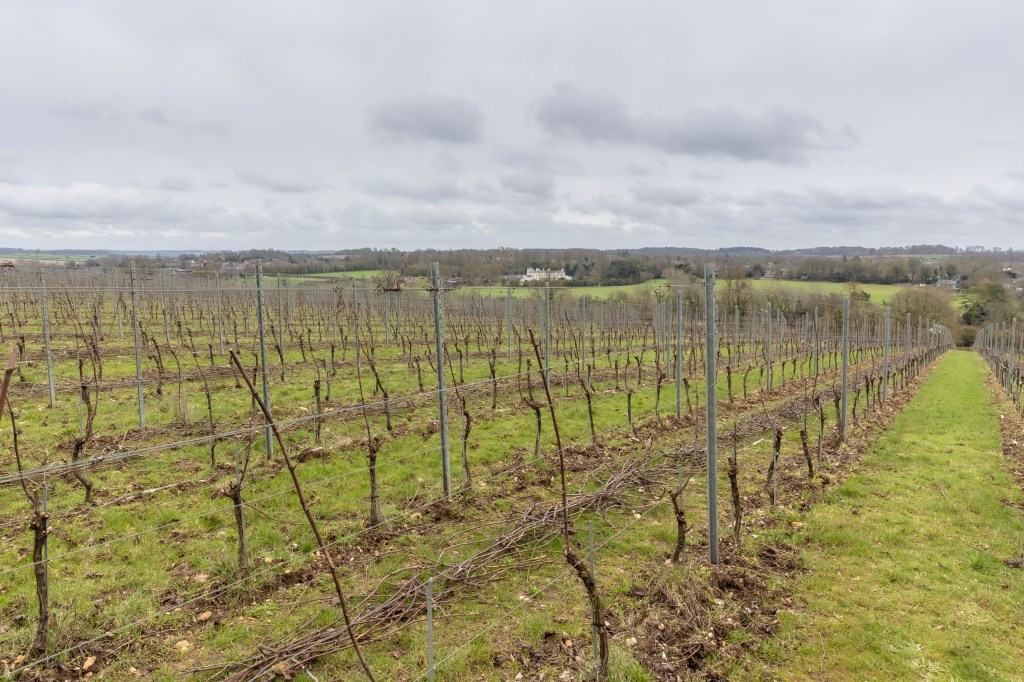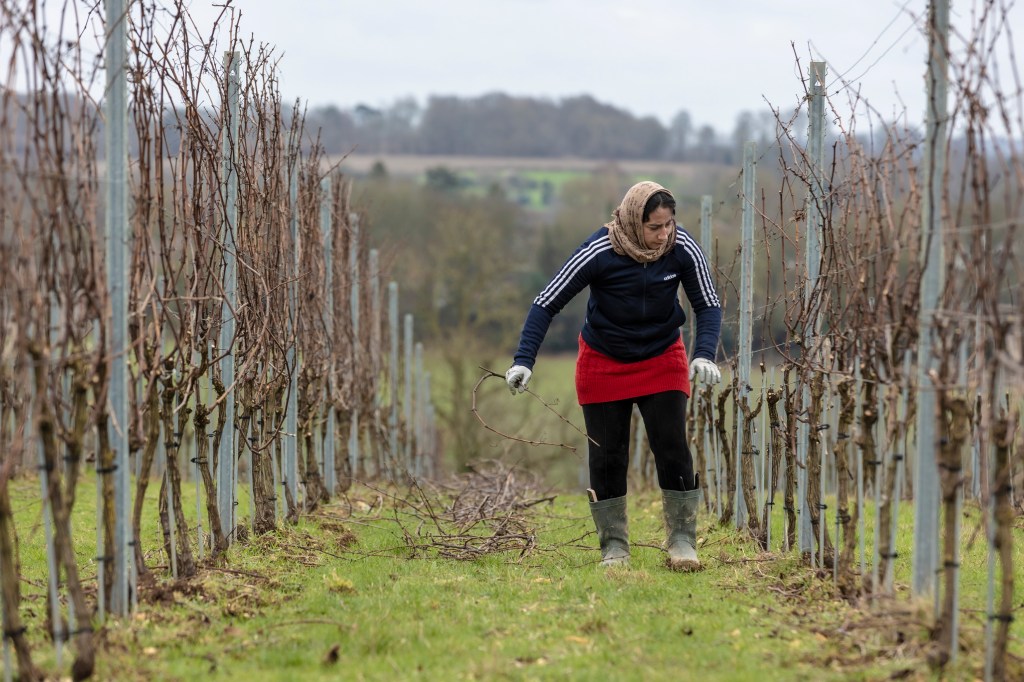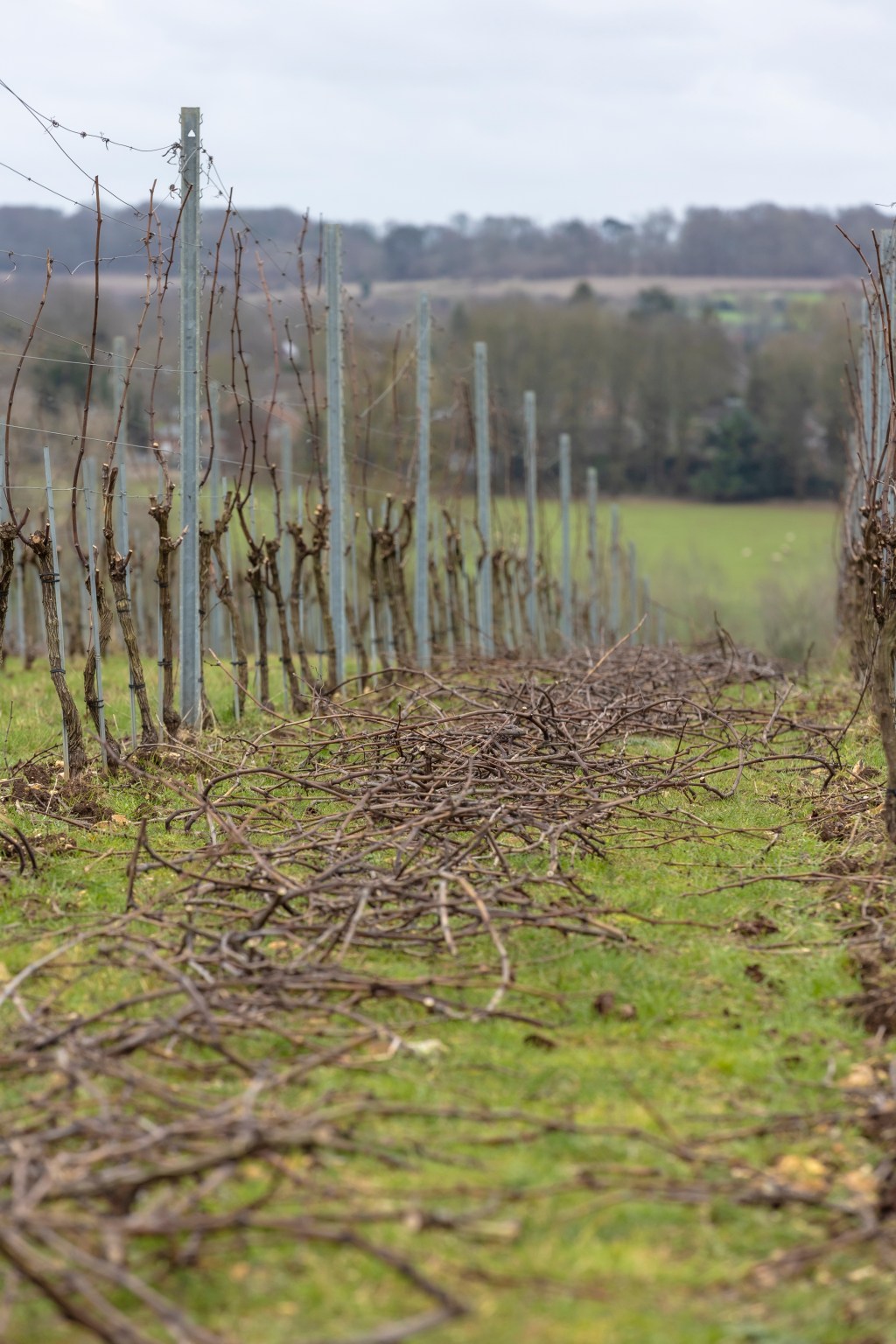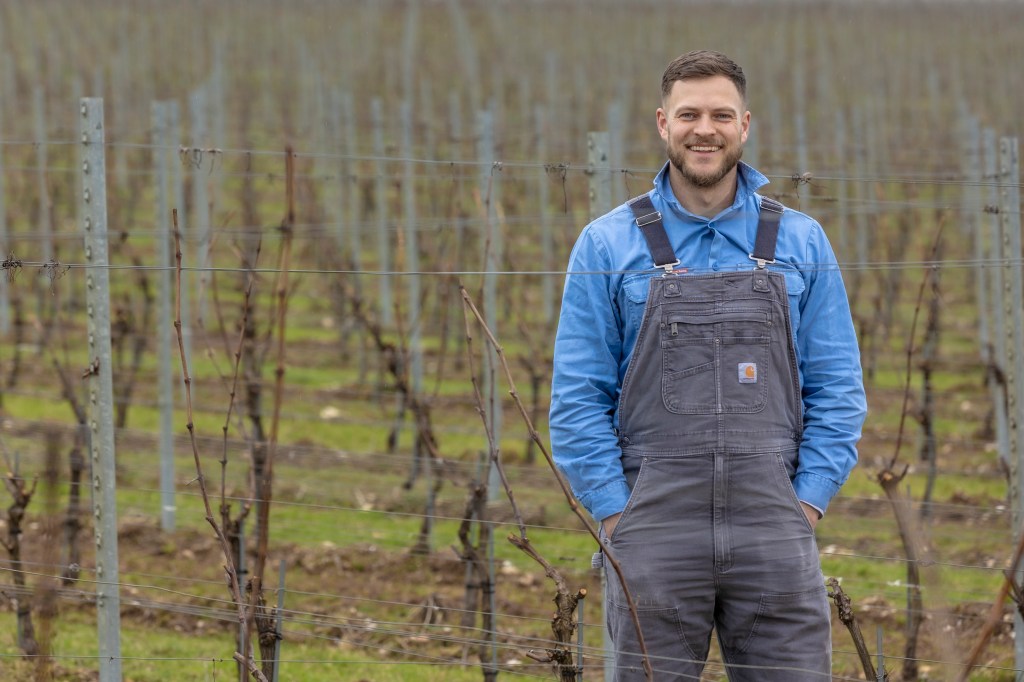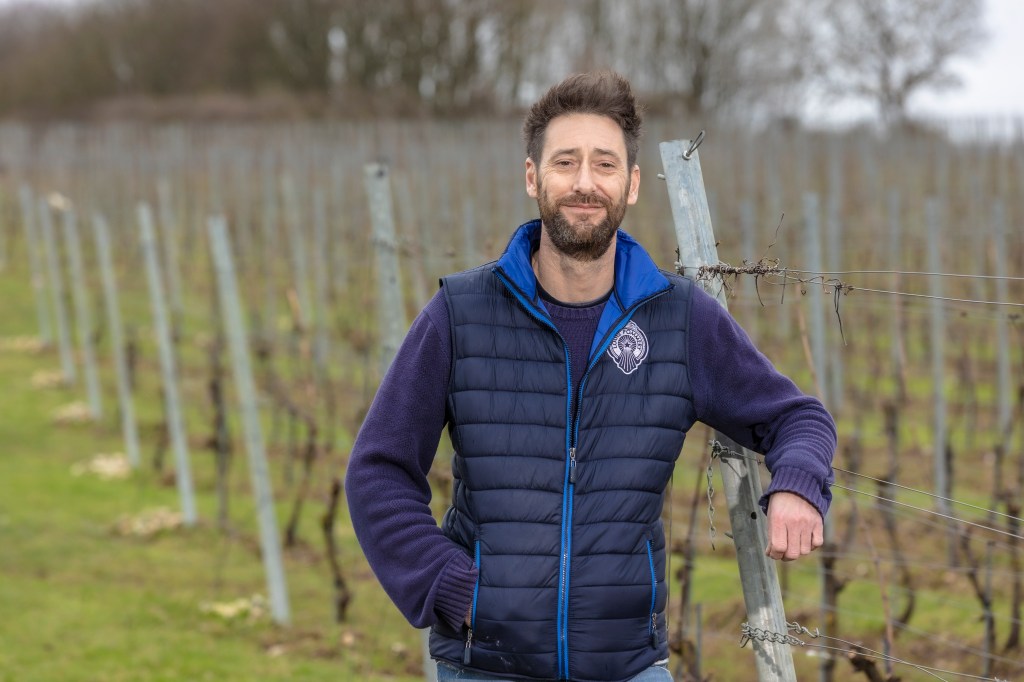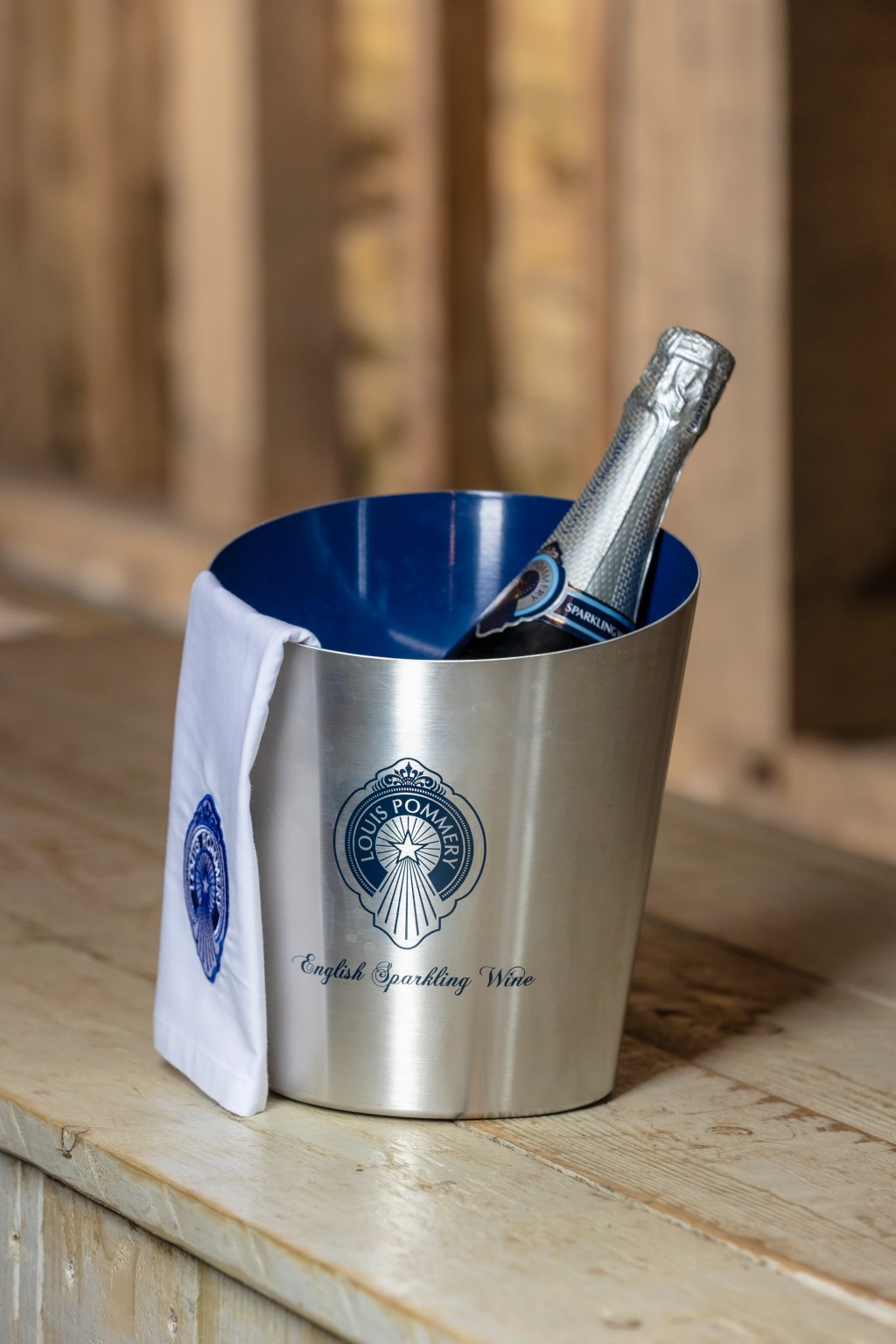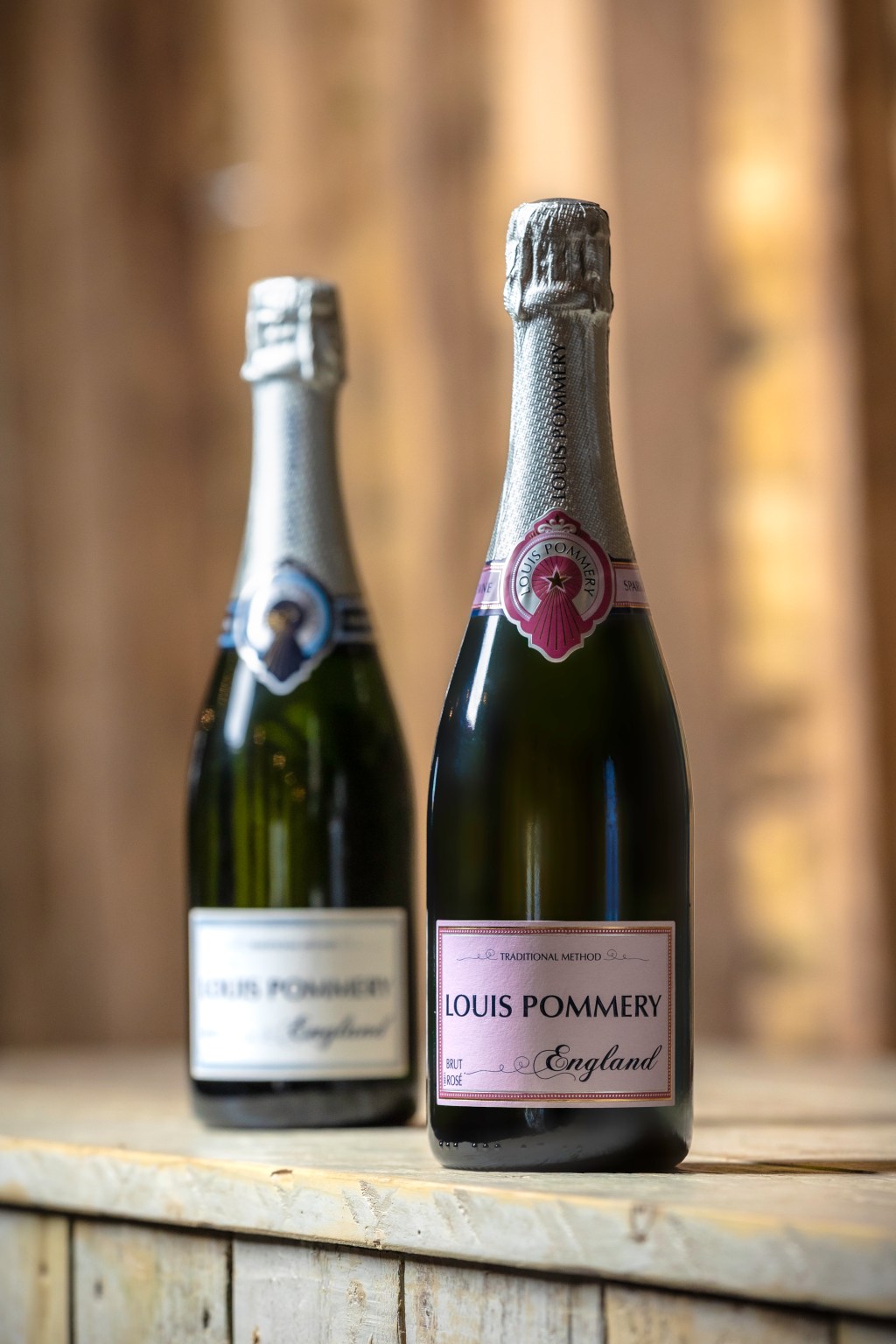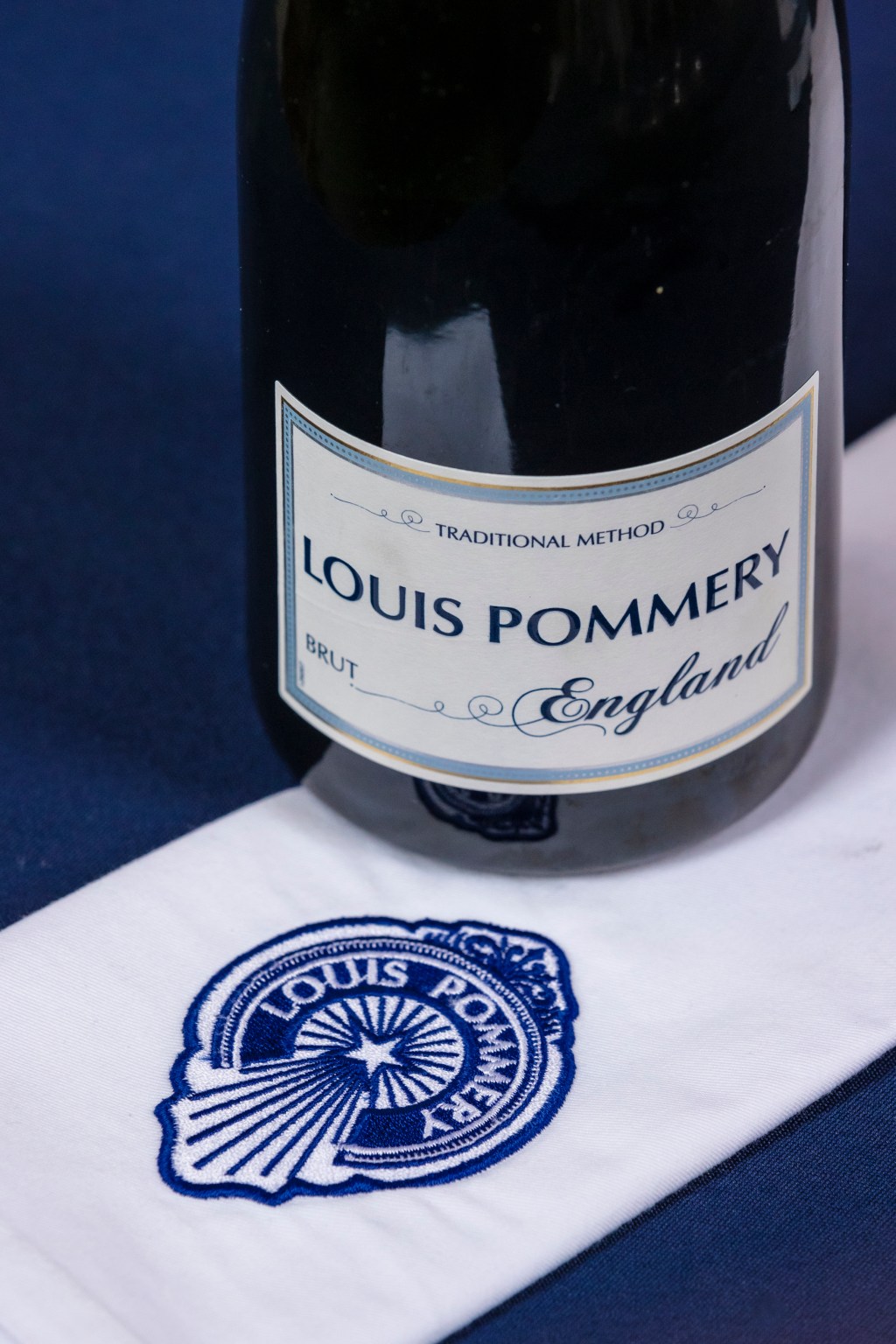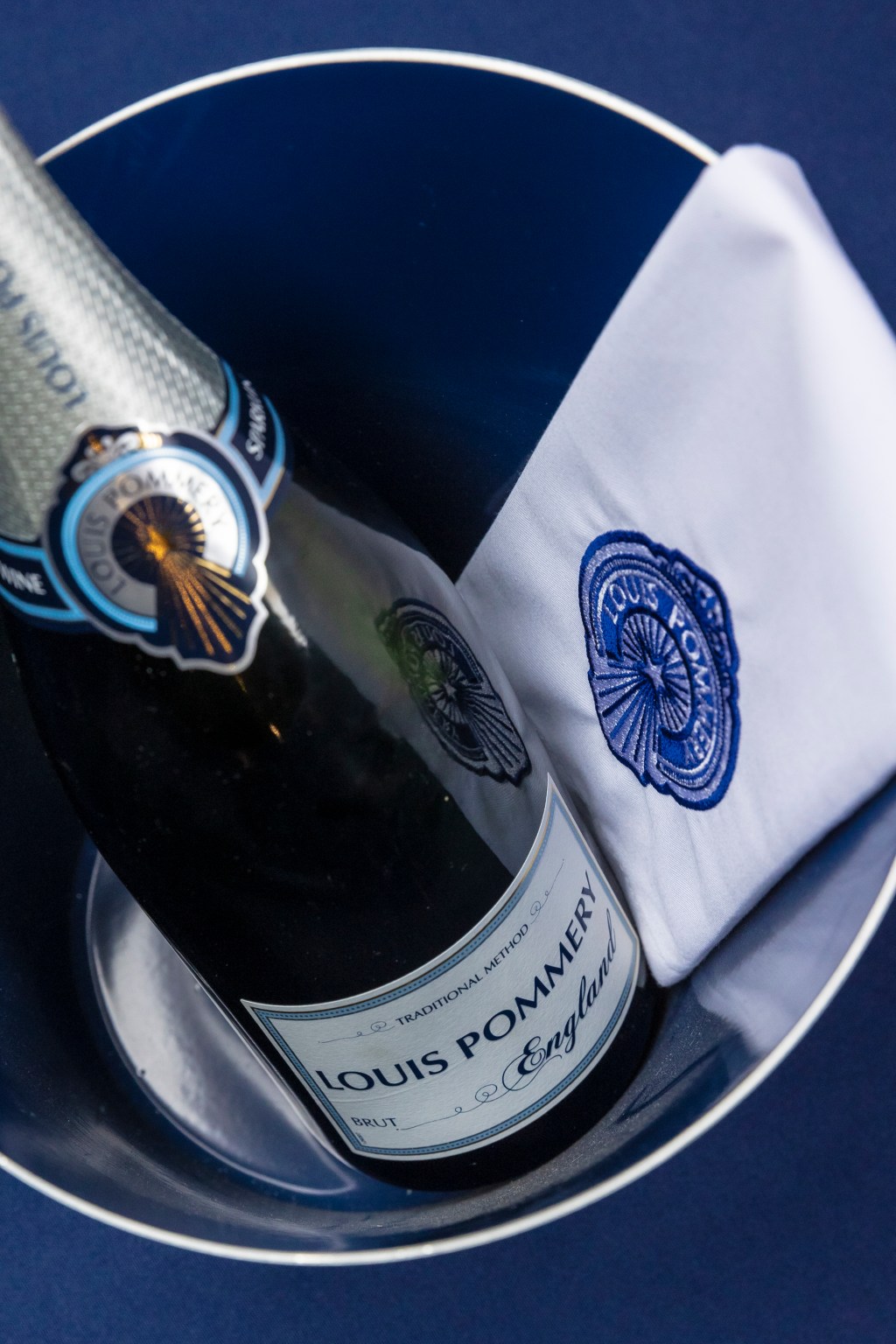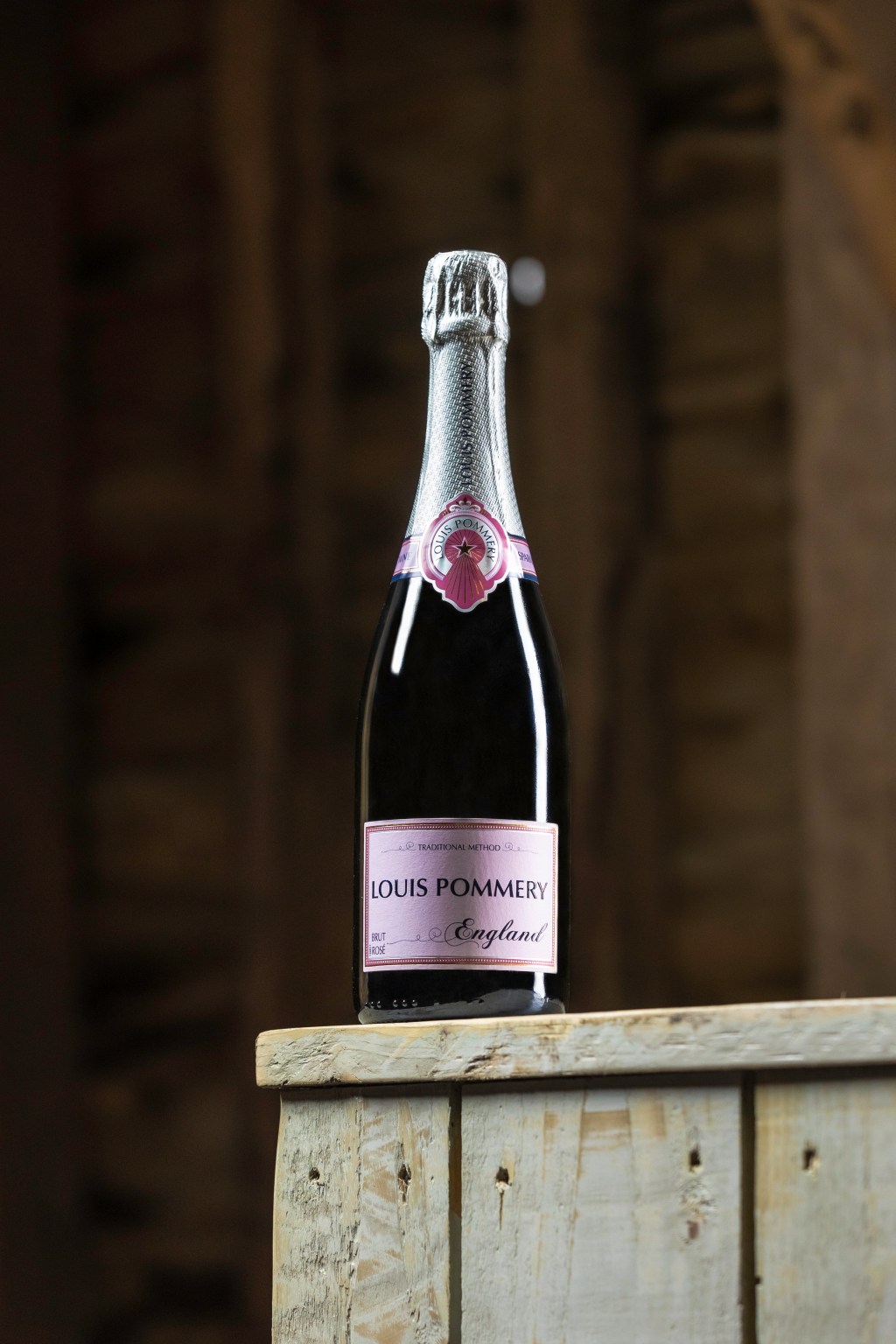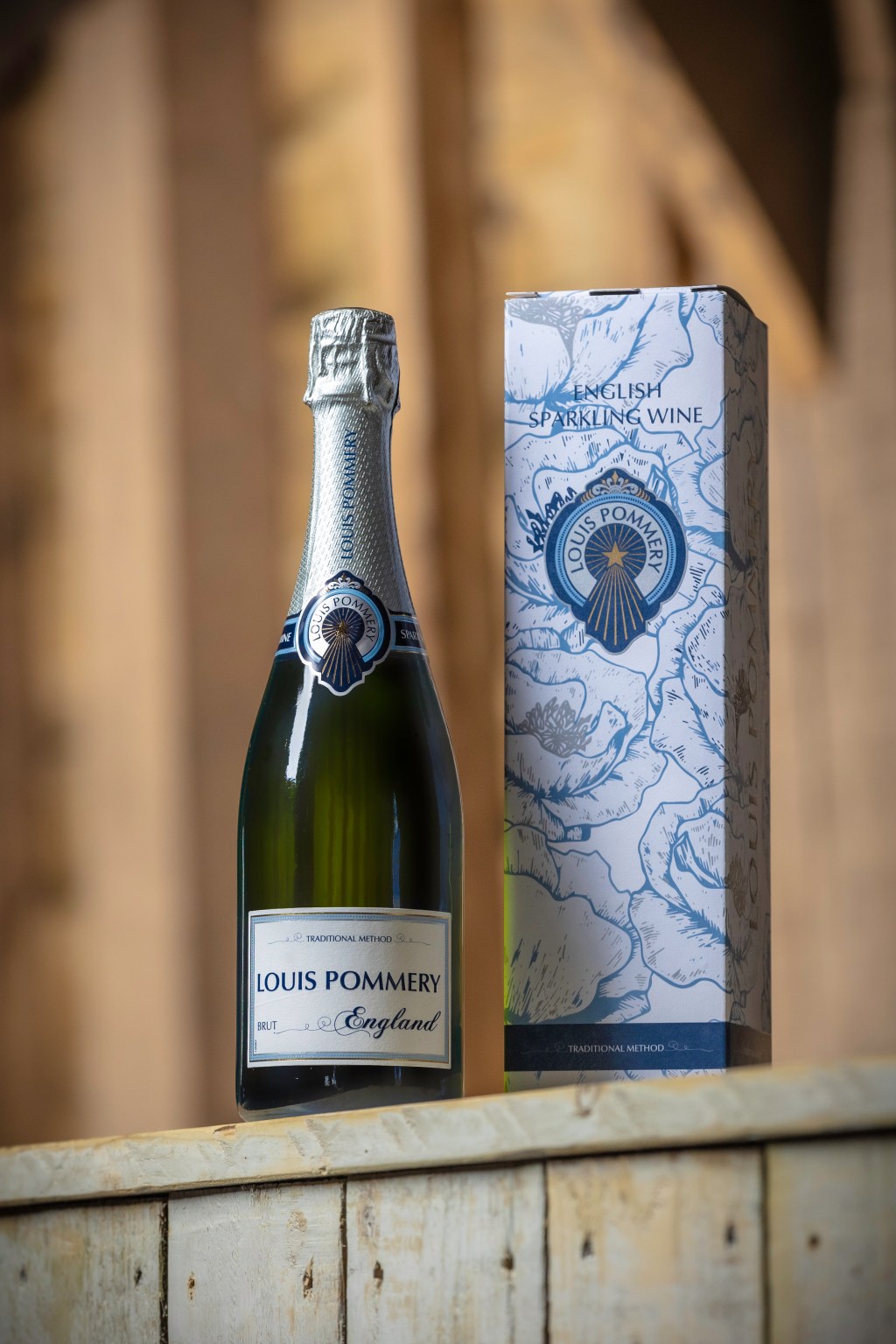Investment in vineyards on these shores has come in many forms over recent decades from traditional growers diversifying to those who have chosen to invest their money in a passion project but perhaps one source of investment that can be considered a complimentary surprise is that of French Champagne houses planting vines on the chalky soils of southern England.
Pinglestone Estate in Hampshire offers a 360° view of vines from the top of the gently sloping 40 hectare site. The wines produced from these vines are labelled Louis Pommery England. As we wander through the strategically planted blocks of Chardonnay, Pinot Noir, Pinot Meunier and Pinot Gris it is abundantly clear that despite the globally famous name attached to this venture this site has been individually nurtured. It is when speaking with head winemaker, Will Perkins and James Bowerman, vineyard manager, that the site specific attention to detail comes into sharp focus.
The Vranken Pommery Group is no stranger to innovation and this is not the only international venture that the world renowned Champagne house has undertaken. Sparkling wine is also produced under the Louis Pommery California label with vines grown at sites in the Napa Valley.
For a large company it is refreshing to note that the objective is only to produce wines that reflect the unique excellence of the sites that have been chosen. Louis Pommery England is uniquely focussed on expressing the very best of the Hampshire terroir and as such has ensured that those at the heart of the enterprise are also from the local area. The wines are driven by what the soil, climate and geography have to offer and not by any influences from elsewhere.
“This is not copy and paste, there has been no desire to recreate Champagne,” said Will. There are however some stylistic threads that are designed to let the wines express what the vineyard has produced and one of those is that there is no oak in the wines. Will explained that there is currently a discussion regarding the possible future use of concrete tanks and ceramic barrels.
These discussions around what the future might hold for Louis Pommery England are gathering pace because planning permission has been granted for an on-site winery. Currently Will and his team use the winery facilities at Hattingley Valley (also in Hampshire) to produce their wine but they are hoping that the new winery will be ready in time for the 2025 harvest.
I ask why Will is so keen to incorporate alternative vessels into the production of wine at Louis Pommery England and he explained: “Concrete as a vessel can be tricky for sparkling wine production but it is the least imposing vessel type so it is respectful of the provenance.”
Louis Pommery England currently has two sparkling wines which are produced with home farmed fruits. The NV Brut together with the newly released Rosé which is predominantly based on the 2021 vintage (with the addition of the perpetual reserve) and has been aging for 18 months on lees in order to prevent the loss of fruit flavour. The wines have undergone 100% malolactic conversion “I have not worked with an English sparkling brand that has that,” said Will who has worked with other English vineyards including Hattingley Valley. “There is a retention of freshness as the spine of the wine but the Malo adds softness,” said Will.
Will has worked full time in the wine industry since 2013 when he was offered a position as an assistant winemaker. Taking a degree at Plumpton College and after working on secondment in South Africa he has also worked in Spain, California, New Zealand and Australia giving him a global perspective on wine production. This perspective is highlighted in his statement that: “The vineyard should leave a thumbprint and the winemaker should be a window into what we are fortunate enough to work with.” The idea of the wine in the bottle being a reflection of the vineyard and the locality is a constant theme in everything that happens at Pinglestone Estate.
With his international experience I asked Will about varieties he has worked with elsewhere in the world. He pointed to working with Riesling vines planted on heavy granite and the Xarello vines of Catalonia as highlights of his career but it is when he talks about Pinglestone Estate and the future of Louis Pommery England that he is the most animated “From one of the blocks of vines I can see the football pitch I played on when I was growing up. Where else in the world could I say that,” said Will. His enthusiasm is infectious and I am already looking forward to my next visit once the winery is up and running.
It seems that working within the group has enabled everyone to adopt better practices and learn from each other in a continuous cycle of improvement. The vineyard has regular monthly visits from Baptiste Chazeaud, project manager for vines and wines at Vranken Pommery and during blending trials Will works closely with Vranken Pommery Chef de Cave Clémont Pierlol. There has been much interest in how the project has translated to a reality and both Will and James have found positivity from all who have been involved. Other producers in the area have also reacted positively to Louis Pommery England and both Will and James speak about the warmth of the wine community.
James Bowerman has worked in the English wine industry for two decades spending a significant amount of his career in the vineyards of Hampshire. It was this local expertise that led to his inclusion in the project right from the beginning. “We looked at many different sites but when we saw this land which was in arable production at the time we knew instantly that it was right, the chalk was visibly sparkling,” said James. “When we were looking at sites there were two members of the team from France and myself all trying not to show that we were from Louis Pommery which was very difficult,” he added with a smile.
The chalk sits at 15cm to 25 cm below the topsoil across the site. To further reflect the geology the vines have been planted in very small blocks. These blocks range in size from 0.7 of a hectare to 2.5 hectares allowing differing techniques to be applied at a level that is astoundingly precise. James likened the effect to “a palette of paints and at harvest you want as many colours as possible.”
It is obvious that although having the title of head winemaker Will also loves being in the vineyard. Working in the vineyard has helped Will to get to know the different nuances of the planted blocks. As an example of how this knowledge has benefitted the wines he lists Fork Road Block 20 as a premium block of Chardonnay and also notes that Alresford Hill Block 11 is a good example of how Pinot Meunier works differently in Hampshire than it would in France. “Here the Pinot Meunier has depth and complexity with blackcurrant notes,” he explained.
Pointing to the exciting future ahead for this vineyard Will also mentioned that 2023 had produced some outstanding Pinot Gris. Pinglestone Estate has a measured approach to producing wine and Will explained that there will be a prestige cuvée but that this will only be attempted once they are sure which blocks are consistently producing fruit of the desired quality.
Out in the vineyard Red Kites circle overhead and the sight of these glorious birds of prey led to a discussion about the balance of predators and pests. A complex eco system is being encouraged at Pinglestone so the bird population is actively being encouraged but only so that it is in balance with the insect population. “Hedges and ancient woodland provide a natural reservoir of wildlife and we have 17 wildlife boxes on site,” said James. The attitude here is that a pest is only a pest if there is no natural predator to keep it in balance.
Across the Vranken Pommery Group there have been moves to highlight the biodiversity of vineyards “we have been allowed to each bring our own ideas and have been supported by the group to push each other,” James added.
Respect for the land and ecological diversity are on display everywhere at the estate and there have been no herbicides used. As evidence of this there are a few stakes in the ground that James explained are there to protect a flower species called Pheasants Eye. Pollinated by insects this now rare flower is testament to the ecological work that has been undertaken on these chalky slopes. When I mention to Will that vineyard work can be lonely he smiled as he replied: “There is so much life about in the vineyard it would be impossible to feel lonely.” James also highlights how surprised the visitors from France are by the variety of life to be found in the soils, hedgerows and skies.
Frost has been making headlines worldwide in recent years and frost can be a problem for the vineyards across Hampshire. At Pinglestone there are currently several frost prevention methods in place. These include fans and bougies but in the future the vineyard will be looking towards new technology such as sprinkler systems to mitigate the frost risks in this part of the world. The potential for frost damage was a consideration when the vineyard was initially planted with the Chardonnay being planted in the least susceptible area. “We have only ever had minimal frost losses,” said James.
With a vineyard team of only four full time staff including Ben Tooley and Louis Wales the whole team is connected to the complete process from ground to glass however during times of high pressure extra help is provided by C&E Vines Labours Ltd. At harvest this consists of a 40 strong team that is able to deliver flexibility. Some of the team return to the vineyard at harvest having helped during other tasks such as pruning. “Hand harvesting really connects people to the environment and it is great to see the pride the team take in the harvest,” Will explained.
Pinglestone Estate is a wonderful blend of the old and the new. The Estate leases a beautiful barn built in 1478 for the Bishop of Winchester which provides a wonderful setting for the tastings that they provide to the establishments that carry Louis Pommery England. Currently around two thirds of sales are to the on-trade with local and London-based accounts making up the mainstay. Sommeliers and other restaurant staff are invited to visit the estate so that they can establish a real connection with the wines they serve in their restaurants.
Standing in this barn Will takes the opportunity to speak about how modern technology has been employed at the vineyard. Solar Radiation Mapping is being used to identify how different blocks will ripen and has also made it possible to identify blocks that may not need leaf stripping in certain seasons, and this is just the beginning. There has also been low level drone imagery used to pick up chlorophyll levels within leaves so performance information can be gathered and acted upon before the eye can even see any visible change. This is the very epitome of using state of the art technology to compliment the regenerative practices and natural ecology that are in practice in the vineyard.
The juxtaposition of this conversation in a beautiful 15th century building highlights the very essence of Louis Pommery England. In a large group it is surprising to find that everyone is pushing towards creative excellence in an individual way with all the benefits and few of the possible drawbacks. Pinglestone Estate is looking towards the future whilst being built on the past with the one only serving to improve the other. To adapt a popular idiom, it is like having your wine and drinking it too.
- Will Perkins
- James Bowerman

